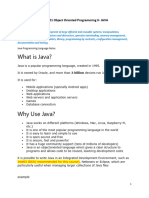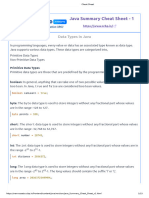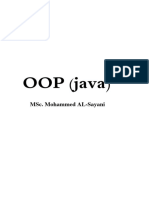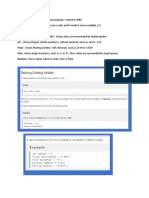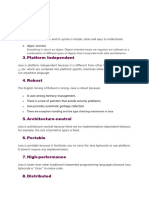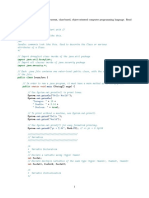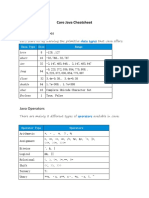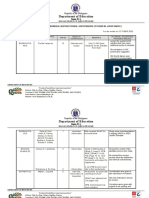0% found this document useful (0 votes)
12 views20 pagesJava 1
The document provides an overview of data types in Java, categorizing them into primitive (e.g., boolean, byte, int) and non-primitive types (e.g., String, Array). It also covers conditional statements, string manipulation methods, input/output basics, and various operators used in Java programming. Additionally, it explains string formatting and character methods, along with examples for clarity.
Uploaded by
Sujit ParteCopyright
© © All Rights Reserved
We take content rights seriously. If you suspect this is your content, claim it here.
Available Formats
Download as PDF, TXT or read online on Scribd
0% found this document useful (0 votes)
12 views20 pagesJava 1
The document provides an overview of data types in Java, categorizing them into primitive (e.g., boolean, byte, int) and non-primitive types (e.g., String, Array). It also covers conditional statements, string manipulation methods, input/output basics, and various operators used in Java programming. Additionally, it explains string formatting and character methods, along with examples for clarity.
Uploaded by
Sujit ParteCopyright
© © All Rights Reserved
We take content rights seriously. If you suspect this is your content, claim it here.
Available Formats
Download as PDF, TXT or read online on Scribd
/ 20







